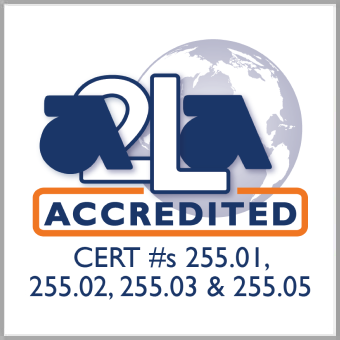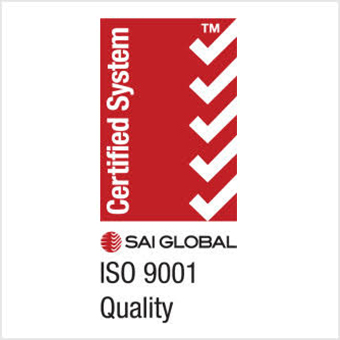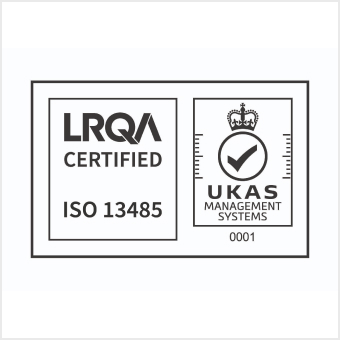Rubber, Vulcanized or Thermoplastic – Determination of Heat Ageing Properties
Part 1: Introduction to Heat Aging in Rubber
- Overview of Rubber Materials
- Types of rubbers: Vulcanized vs. Thermoplastic
- Composition and structure of rubber materials
- Natural rubber vs. synthetic rubber
- Elastomeric properties: Flexibility, elasticity, and strength
- Role of fillers, plasticizers, and accelerators in rubber properties
- Common applications of rubber materials in automotive, industrial, medical, and consumer products
- The Concept of Heat Aging in Rubber
- What is heat aging? Definition and importance in rubber technology
- How temperature accelerates the chemical and physical degradation of rubber
- The effects of heat on rubber properties (loss of elasticity, hardening, embrittlement, dimensional changes)
- The Importance of Heat Aging Testing
- Predicting the long-term performance of rubber components under elevated temperatures
- Ensuring material durability in automotive, aerospace, industrial, and medical applications
- Meeting industry-specific requirements and standards for heat aging resistance
Part 2: Rubber Heat Aging Mechanisms
- Chemical Degradation
- Oxidation: The primary chemical degradation mechanism
- The role of oxygen, ozone, and other reactive elements in rubber deterioration at high temperatures
- Mechanisms of oxidation and their impact on rubber’s mechanical properties
- Influence of additives like antioxidants and stabilizers in reducing oxidative degradation
- Thermal Degradation
- The effect of elevated temperatures on the polymer chain structure
- Breakdown of crosslinks: The effect on rubber’s elasticity and strength
- Heat-induced softening and embrittlement
- Temperature’s influence on the glass transition temperature (Tg) and melt flow
- Physical Degradation
- Loss of flexibility and hardness due to prolonged exposure to heat
- Impact on tensile strength, elongation, and elasticity
- Influence of prolonged heat exposure on dimensional stability (shrinkage, expansion)
- Impact of Crosslinking on Heat Aging
- How vulcanization (crosslinking) affects rubber’s resistance to heat aging
- Differences in heat resistance between vulcanized and thermoplastic rubbers
- The role of curing agents and their impact on heat aging properties
Part 3: Testing Methods for Heat Aging Properties
- Overview of Heat Aging Testing Methods
- Testing for heat aging resistance: Basic principles and importance
- Real-time vs. accelerated testing approaches
- Industry standards and best practices for testing heat aging properties
- Key Testing Standards for Heat Aging
- ASTM D573: Standard Test Method for Rubber—Deterioration by Heat and Oxygen
- Procedure, testing conditions, and key considerations
- Interpreting test results (changes in physical properties, aging time, temperature)
- ISO 188: Rubber—Accelerated Aging and Heat Resistance
- Overview of the procedure and parameters
- Comparison of ASTM D573 vs. ISO 188
- DIN 53 521: Rubber—Determination of Heat Resistance
- Test procedures and result interpretation
- Application in European industry
- SAE J2004: Automotive elastomer testing for heat aging
- ASTM D573: Standard Test Method for Rubber—Deterioration by Heat and Oxygen
- Testing Protocols for Heat Aging
- Heat aging in air vs. sealed conditions (air ovens, moisture control)
- Temperature and duration parameters (high temperatures, extended exposure periods)
- Sample preparation: Dimensions, surface finish, and pre-treatment
- Measuring and recording changes in physical properties (hardness, tensile strength, elongation)
- Environmental Heat Aging Tests
- Influence of humidity and temperature cycling in real-world environments
- How to test rubber materials under combined heat and humidity stress (e.g., ASTM D573, ISO 188)
- Simulating service conditions in specific industries: automotive, aerospace, industrial machinery
- Dynamic Mechanical Analysis (DMA)
- Application of DMA to evaluate rubber heat aging
- Temperature sweep analysis: Measuring modulus and loss tangent
- Determining the glass transition temperature (Tg) and heat-induced softening
- Thermogravimetric Analysis (TGA)
- TGA for evaluating thermal stability of rubber under heat aging conditions
- Measuring weight loss and decomposition temperatures
- Determining the degradation temperature and its impact on rubber performance
- Rheological Testing for Heat Aging
- How viscosity and flow properties are used to assess heat aging
- Rheometers and their role in determining the changes in the flow behavior of rubber after heat exposure
- Real-Time Aging vs. Accelerated Aging
- Differences between real-time and accelerated aging methods
- How accelerated aging mimics long-term exposure to heat and stress
- Calibration of accelerated aging conditions to reflect actual service conditions
Part 4: Industry-Specific Applications and Case Studies
- Automotive Applications
- High-temperature resistance in automotive elastomers: Engine parts, seals, gaskets, hoses, and belts
- Impact of heat aging on rubber in engine compartments, exhaust systems, and under the hood
- Case studies of rubber failures due to heat aging in automotive applications and how testing helps mitigate these failures
- Design considerations for elastomers exposed to elevated temperatures in vehicles
- Aerospace Applications
- The role of rubber components in aerospace: Seals, gaskets, fuel system components, and vibration isolators
- Testing for heat aging resistance in high-performance aerospace elastomers
- Case studies of elastomer failures in aerospace applications and lessons learned
- Industrial and Heavy Equipment Applications
- Rubber in industrial machinery and heavy equipment exposed to elevated temperatures
- Testing elastomers for heat aging in pumps, valves, seals, and gaskets
- Applications in oil and gas, mining, and manufacturing industries
- Medical and Food-Contact Applications
- Heat aging testing for rubber used in medical devices and food processing equipment
- Evaluating elastomers for sterilization, autoclaving, and prolonged heat exposure in healthcare
- Regulatory compliance and testing standards for rubber materials in medical and food contact applications
Part 5: Advanced Topics in Heat Aging Testing
- Innovations in Heat Aging Testing
- New testing equipment and methodologies for accelerated heat aging
- Advances in testing protocols to better simulate real-world environmental conditions
- The use of artificial intelligence (AI) and machine learning in heat aging predictions and material characterization
- Predictive Modeling of Heat Aging
- Computational models and simulations for predicting rubber degradation under heat stress
- The role of machine learning and data analytics in optimizing heat aging tests
- Long-term performance predictions based on test data
- Non-Destructive Testing (NDT) in Heat Aging
- Non-destructive methods for assessing heat aging in elastomers without material failure
- Techniques such as ultrasonic testing, infrared thermography, and X-ray analysis
- Heat Aging and Material Design
- How material selection affects heat aging properties (crosslink density, fillers, plasticizers)
- Developing elastomers with superior heat resistance through new additives, stabilizers, and advanced polymer technologies
- The role of sustainability in designing elastomers with better heat aging properties
- The Role of Additives in Improving Heat Aging Resistance
- Antioxidants, UV stabilizers, and other additives used to improve thermal stability
- How different additives interact with rubber under heat aging conditions
- The impact of additives on the long-term performance of elastomers in high-temperature environments
Part 6: Regulatory Compliance and Standards
- Global Standards and Regulatory Requirements
- Overview of global testing standards for heat aging (ASTM, ISO, SAE, DIN)
- Compliance requirements in various industries (automotive, aerospace, medical)
- The role of regulatory bodies in ensuring elastomeric materials meet heat aging criteria
- Quality Control and Assurance in Heat Aging Testing
- Implementing quality control procedures in heat aging testing
- Ensuring consistent results across different testing environments and laboratories
- Best practices for data analysis, documentation, and reporting
Part 7: The Future of Heat Aging Testing
- Emerging Trends in Elastomer Testing
- The growing demand for higher-performance elastomers in extreme environments
- The role of innovative materials and nanotechnology in enhancing heat resistance
- The integration of real-time monitoring technologies for more accurate heat aging analysis
- Conclusion
- Recap of the importance of heat aging testing for ensuring the durability and safety of rubber components in high-temperature applications
- The ongoing evolution of testing methods, materials, and industry standards to address the challenges of heat aging
Rubber, Vulcanized or Thermoplastic – Determination of Heat Ageing Properties



